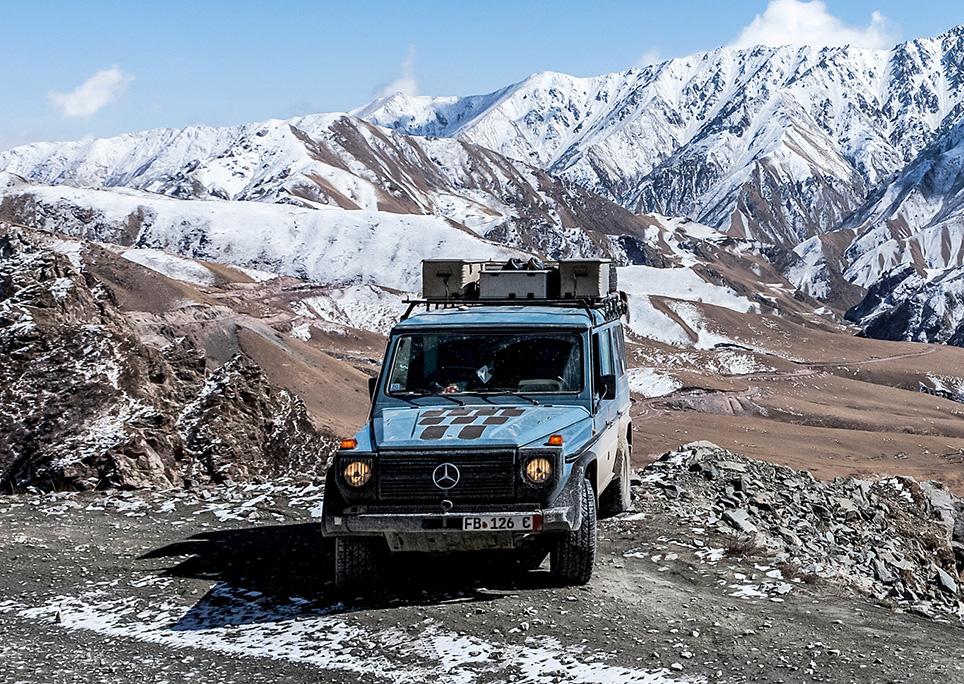Born out of a joint venture in 1979 between Mercedes-Benz and two other companies, Steyr and Puch of Austria, the Steyr-Daimler-Puch Gelaendewagen was (and still is) virtually hand-built in Austria. It was first and foremost a heavy-duty off-road vehicle favored by various military groups and safari zealots. Loosely translated, Gelaendewagen means “tough terrain vehicle.”
Those familiar with this rig usually call it by its nickname, G-wagen. Usually propelled by a diesel engine, the early G-wagen was not luxurious by any stretch (manual windows and tartan cloth seats were the order of the day) but developed a reputation for being able to get through most anything, no matter how treacherous or steep the terrain.
These workhorses were offered with a variety of relatively frugal gasoline and diesel power plants. As with other Mercedes-Benz models, the numbers and letters indicated the engine’s size and whether it was gasoline- or diesel-powered, e.g., the 230 G (petrol) and 240 GD (diesel).
Two petrol models (the four-cylinder 230 and six-cylinder 280) and two diesel models (the 240 and 300) were available with horsepower ranging from 72 to 150. There were three body styles to choose from, a pair of short-wheelbase two-doors (hardtop and convertible) and a long-wheelbase four-door wagon.
The calling card of the G was its incredibly rugged nature; in 1983 a 280 GE (with Jacky Ickx and Claude Brasseur at the helm) won what is perhaps the most grueling race on the planet, the Paris-Dakar Rally. Not much changed for the next couple of years, but in 1986 the 50,000th G-wagen rolled off the line. That year also saw minor changes to the cabin that improved comfort, the addition of a catalytic converter that decreased emissions and the replacement of the 240 GD with the 250 GD. The next three years passed without anything newsworthy, save for the G’s 10th birthday in 1989.
1990-1996 (see picture below)
A revised chassis was found under the familiar (some would say classic) body for 1991. A pair of high-tech features topped the list of improvements that weren’t readily apparent at a casual glance. Antilock brakes and three electronically engaged locking differentials made the G safer on road and more capable off. In addition to the standard locking center differential seen on most truck-based SUVs, the G boasted front and rear locking diffs that gave the Benz the grip and agility of a mountain goat when faced with treacherous terrain.













